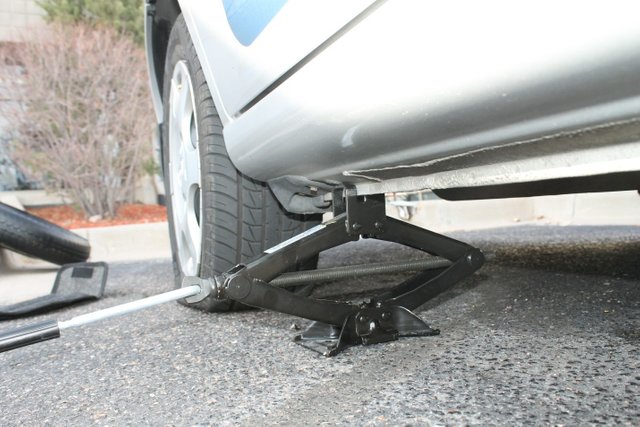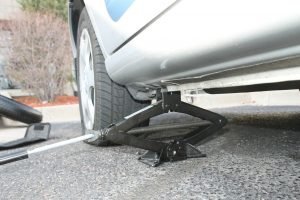
It is often frustrating for drivers to make what seems to be endless repairs to their vehicles, which eats up both valuable time and money.

While some people will resort to public transport or private individuals via Lyft or Uber, others can't go without the luxury and convenience of owning their own vehicle.
Although not being very well known to anyone but gearheads, your vehicle operates on complicated mechanisms with interconnected parts which may stop functioning at any time for unexplained reasons. Unseen damage may impact multiple areas in your vehicle and may negatively impact performance and longevity.
Regardless of how you skilled your driving is, some of your daily driving habits may take a toll on your vehicle. Here are some tips you can implement to avoid damaging your vehicle:
Avoid driving through potholes
Cracks on road surfaces, combined with rainfall, standing water and the elements of street and highway traffic and erosion, result in the development of pothole formations. Driving through these potholes may result in unbalanced wheel alignment, lumpy tires or a damaged suspension and may cost a fortune to repair.
As a pothole gets deeper, the adverse affects on a vehicle's suspension and steering control will increase.
If potholes are unavoidable and you hit one, resulting in a flat tire or other damage, take documentation of the damage and the vicinity of the pothole. You may need this information if your local public works/streets department or state department of transportation offers a program to offer compensation for repairs, which may also require a copy of the repair bill.
Avoid driving over curbs or culverts
Curbs or culverts are sometimes considered as getaways to avoid traffic from an emergency services vehicle or to maneuver out a parking space. In some cases, an over-estimation of wheel traction and/or over-steer or under-steer may result in damage to tires and rims, with further impacts including noise wheel hub bearings and bending of suspension or steering components leading to vehicle misalignment.
You can usually find accurate reference points to determine the difference between the wheel and curb or you can reach out to a passerby to judge the distance between the wheel and curb.
Avoid abrupt braking
In the city, two things are unavoidable: heavy traffic volumes and sudden stops. This is a combination which may result in stomping the brakes too often, especially if you are following another vehicle too closely. Sudden braking at high speeds or over short distances will building up kinetic energy, which easily heat up the brake discs, wear down the brake pads and could result in damage to the discs.
Whenever possible, take a less congested route and maintain a fair distance from other vehicles.
Be wary of improper engine warmups
When your start your engine, the oil pump has to circulate oil through the engine and has to fully circulate before moving. In the winter time, the motor oil thickens and cannot flow through the system. Starting the engine and taking off may cause problems during this season and perhaps further damage down the road.
To rectify this issue, let the engine idle for at least 10 seconds for hitting the road and drive at a slow pace at the beginning of your journey to allow for the engine to fully warm up and facilitate full lubrication of the engine.
Avoid resting on the clutch pedal
This tip is not common with vehicles with automatic transmissions, but rather manual transmission vehicles.
In vehicles with manual transmissions, some drivers habitually rest their foot on the clutch pedals, resulting the release bearing to ride against the pressure plate, thus compressing the clutch, heating it up and wearing it down. Further damage can result in a high repair bill.
Avoid excessive loads
While not necessarily a common problem, a minority of drivers experience this issue with their vehicles. Overloading a vehicle beyond its maximum authorized mass (also known as load or payload) can result in damage to the clutch, brakes, suspension and wheels.
So when going camping, moving from house to house or carrying parcels, check your maximum authorized payload.
Keep a regular maintenance schedule
It is important to maintain a regular maintenance schedule, which involves regular oil changes (every 3,000 to 5,000 miles, varies by vehicle), as well as maintenance on tires, the engine, brakes, suspension and other factors. This would also include actively keeping an eye on the level of other fluids, such as engine coolant, brake fluid, windshield cleaner fluid, fuel and engine lubricants and transmission oil.
Not keeping regular maintenance may result in not noticing fluid leakages, wear and tear of seals and gaskets and ineffective, contaminated running of the engine -- leading up to the engine seizing permanently. You could end up sifting through a list of re-manufactured and pre-owned engines which could run up a bill of $3,000 to $10,000 (and that's without the labor costs). In most cases, it would be wise to just buy another vehicle.
However, it's just best to keep regular maintenance of your vehicle, check fluids regularly and replace them periodically, keeping them filled to optimal levels.
Avoid driving on a low fuel tank
Gasoline or diesel serves as a lubricant to the fuel pump, which supplies fuel to the engine. When the tank is out of fuel, the engine picks up the fuel residue from the bottom of the tank where fuel impurities are. Accumulation of these impurities in the fuel line can block the fuel filter, clog up the fuel line and cause damage to the engine.
Avoid driving your vehicle on less than quarter-filled. For cost-effective optimal operation, ensure your fuel tank remains at least half-filled at all times.
Pay close attention to dashboard indicators
Modern vehicles come with a multitude of dashboard indicators, with a recent British survey stating 98 percent of drivers did not understand what these lights meant, not recognizing the lights regarding low tire pressure, engine emissions or fog light indicators.
With more vehicles on the road each day, combined with younger drivers hitting the roads and a surge in business to buy cars online, there has been minimal focus on the importance of these indicators.
These indicators are important as they indicate if something is wrong with your vehicle. They may be of assistance if something isn't quite right with your vehicle, especially if the malfunction is something that is under recall, much like the ongoing situation with Takata air bags (dating as far back as 2013).
Automotive functions are tricky, so drive safe and defensive and be vigilant of any detected glitches. Keep regular maintenance of your vehicle and offer it the pampering it needs in order for a long life of your vehicle.

Alma Causey is a freelance writer by day and a sports fan at night. Causey regularly writes about technology, education and health issues with the intent to "live simply, give generously, watch football and love technology."
Posted from my blog with SteemPress : http://heartlandnewsfeed.com/2018/06/12/tips-to-avoid-damaging-your-vehicle/